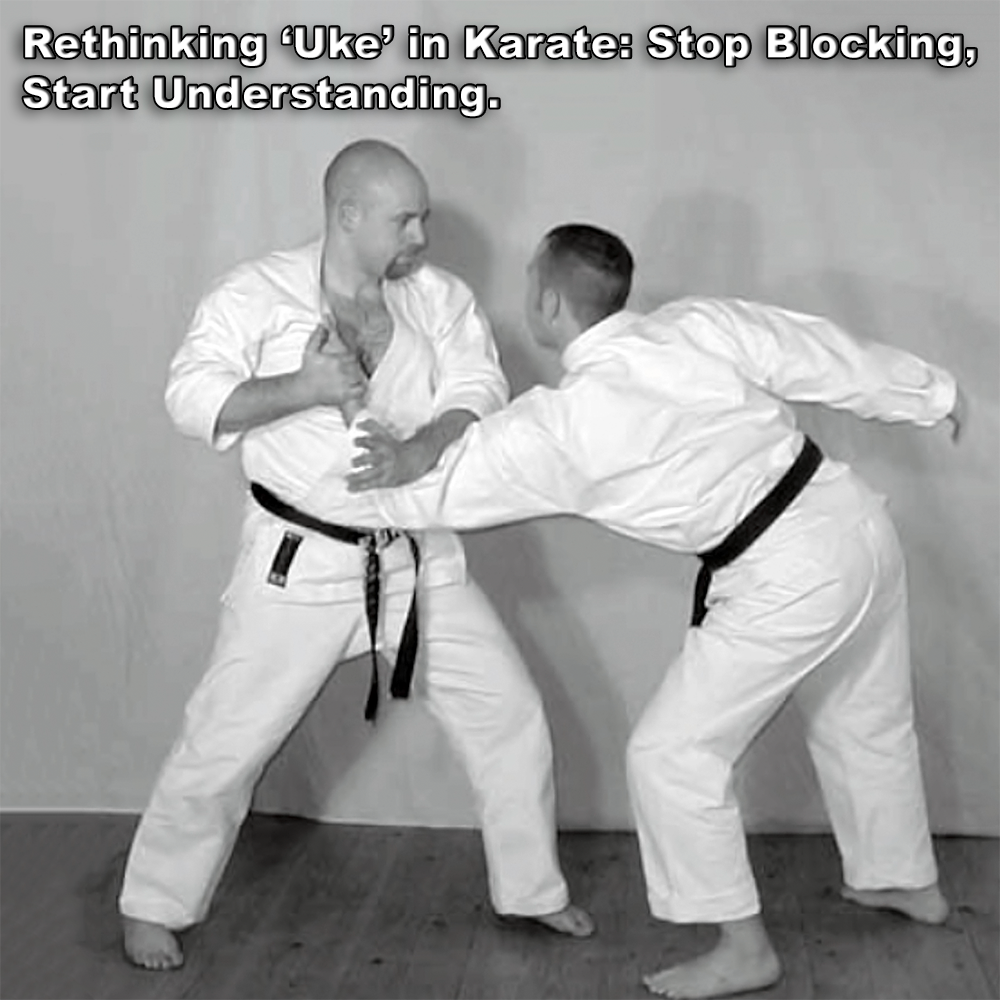
(Approx 2 minute 20 second read)
Blocking – one of the most misunderstood actions in karate.
.
In Japanese terminology we use the word uke, but this little, seemingly simple term doesn’t mean “blocking” at all. Yet so many practitioners still use it that way, and much of their karate revolves around the idea of a block.
.
The word uke is actually a shortened form of ukeru, which means “to receive”.
.
That is something entirely different from the idea of meeting force with force to stop it. You would think by now, with all the information available, that everyone would know this.
.
But if you think of it as “receiving” instead, it opens up far more interpretations – and far more possibilities.
.
Every movement in karate has a shape, a path it follows. When we hang a name on that shape – uke, tsuki, keri – we start to limit ourselves. We begin to see only the label, not the full potential of the movement.
.
This is where the problem with blocking lies. The so-called success of a block depends almost entirely on having prior knowledge of the attack. If I know you are going to punch straight to my stomach, of course I can “block” it. But in reality, how often do you know what’s coming?
.
Try this with a partner: ask them to throw random punches, kicks, grabs, or strikes at you at close range. See how many times you can actually use a formal block successfully. You’ll quickly learn that blocking, as it’s often taught, is almost impossible against unpredictable movement.
.
When I teach, I like to slow movements down. I show the exact arc or track from beginning to end, and I encourage students to look at why the movement travels that way. This often raises questions. Often the beginning or mid part of the movement is the most important.
.
Take a so-called “middle block”, for example – uchi-uke, yoko chudan uke, whatever your style calls it, the inside-to-outside block. Where does it start? Your hand reaches across to the opposite hip. Why? If the purpose is to stop a punch aimed at the midline, as often taught in kihon and step-kumite, wouldn’t moving your arm away from the threat first make you even slower to react?
.
Reaction is always slower than action, so if you rely on blocking a committed strike, you are already behind.
.
Unless you already know what’s coming, you won’t make it in time. Many of the movements labeled as “blocks” share this same anomaly. If the timing and mechanics don’t make sense as a block, then perhaps they were never meant to be blocks at all.
.
And that is the point: what we call “blocking” in karate is in fact something very different. Receiving, deflecting, controlling, striking, unbalancing – the possibilities are endless if you step away from the narrow idea of stopping an attack dead in its tracks to then perform a neat counter.
.
So maybe the lesson here is simple: stop thinking in terms of blocking. Start thinking in terms of receiving. Once you do, the shapes of techniques begin to reveal a deeper meaning, one that has always been there – if only we stop letting the names blind us to the movement.
.
The moment you stop blocking, you start understanding.
.
.
Written by Adam Carter – Shuri Dojo
.
.
Photo Credit: With thanks to Iain Abernethy
